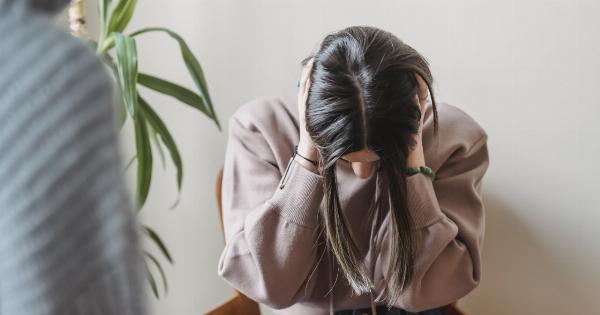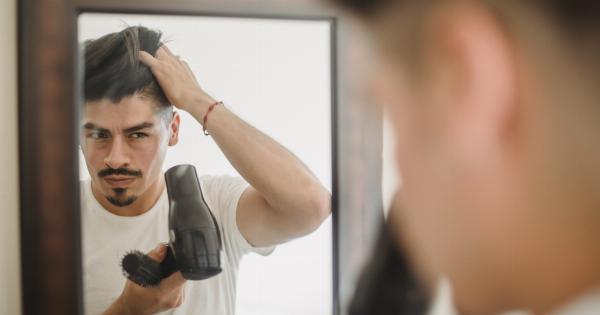When it comes to hair loss, there are numerous myths and misconceptions that many people believe to be true. These myths can often add to the confusion surrounding hair loss and make it difficult to separate fact from fiction.
In this article, we will debunk some of the most common hair loss myths and provide you with the truth behind them.
Myth #1: Wearing a Hat Causes Hair Loss
This is one of the most prevalent myths about hair loss. The truth is that wearing a hat does not directly lead to hair loss.
However, if the hat is too tight and puts excessive pressure on the scalp for an extended period, it may result in a condition called traction alopecia. This condition occurs when the hair is pulled tightly, causing stress on the hair follicles. So, it is advisable to wear hats that fit properly without exerting excessive pressure on the scalp.
Myth #2: Hair Loss Is Only a Man’s Problem
While it is true that men are more likely to experience hair loss, it does not mean that women are completely immune to this condition.
In fact, women can also suffer from hair loss due to various reasons such as hormonal imbalances, genetics, and certain medical conditions. Women may experience hair thinning and hair loss patterns that differ from men, but it is still a significant concern for them as well.
Myth #3: Hair Loss Is Always Genetic
Although genetics play a significant role in hair loss, it is not the only factor. Many other factors can contribute to hair loss, including stress, hormonal changes, nutritional deficiencies, certain medications, and underlying medical conditions.
Understanding the underlying cause of hair loss is crucial for determining the appropriate treatment or management plan.
Myth #4: Baldness Is Inevitable With Age
While hair thinning and loss are more common as we age, it does not mean that everyone will go completely bald. Many people maintain a healthy head of hair well into their later years.
It depends on various factors such as genetics, overall health, and lifestyle choices. Taking care of your hair and overall health can help slow down the hair loss process and maintain a fuller head of hair as you age.
Myth #5: Regularly Shaving Your Head Makes Hair Grow Thicker
Shaving your head does not affect the thickness or growth rate of your hair. This myth likely originated from the observation that hair appears thicker and more stubbly when it first grows back after shaving.
However, this is only an illusion, as the hair shaft itself remains the same thickness. Regular shaving may help to maintain a neat and uniform appearance, but it does not change the fundamental characteristics of your hair.
Myth #6: Stress Is the Sole Cause of Hair Loss
Stress can contribute to hair loss, but it is rarely the sole cause. In most cases, hair loss due to stress is temporary and reversible.
Telogen effluvium is a form of hair loss triggered by significant stress, where the hair prematurely enters the resting phase of the hair growth cycle. Once the stress is addressed and managed, the hair typically regrows. However, chronic stress or other underlying factors can exacerbate hair loss and make it more difficult to reverse.
Myth #7: Only Older People Experience Hair Loss
Hair loss can occur at any age. While it is more common in older individuals, younger people can also experience hair thinning and loss. In fact, conditions like alopecia areata and trichotillomania can affect individuals of any age.
Treating hair loss early is important in preventing further progression and maintaining a healthy head of hair.
Myth #8: Washing Your Hair Too Often Causes Hair Loss
Regularly washing your hair does not cause hair loss. In fact, keeping your scalp and hair clean is essential for maintaining a healthy environment for hair growth.
However, using harsh shampoos or excessive heat styling tools can damage the hair shaft, leading to breakage and thinning. It is important to strike a balance by using gentle, sulfate-free shampoos and minimizing heat styling to maintain the integrity of your hair.
Myth #9: Wearing Tight Hairstyles Leads to Permanent Hair Loss
While tight hairstyles like ponytails or buns can contribute to hair breakage and traction alopecia, this type of hair loss is usually reversible if caught early.
Traction alopecia occurs when there is continuous tension on the hair follicles, causing them to weaken and eventually stop producing hair. Avoiding tight hairstyles and giving your hair regular breaks from styling can help prevent hair loss and promote healthier hair growth.
Myth #10: Hair Loss Can Be Cured by Products or Supplements
Many over-the-counter products or supplements claim to cure hair loss. However, most of these claims are unsubstantiated.
While some treatments, like minoxidil or finasteride, can slow down hair loss and promote regrowth in certain individuals, they are not effective for everyone. It is best to consult with a dermatologist or hair loss specialist to determine the appropriate treatment options based on the underlying cause of your hair loss.























